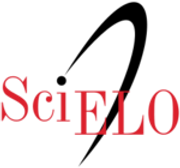Color study of the building of the Faculty of Architecture, Urbanism and Arts of the National University of Engineering
DOI:
https://doi.org/10.21754/devenir.v7i14.774Keywords:
color, prospecting techniques, historic building of the Faculty of Architecture; Urbanism and Arts of the National University of EngineeringAbstract
In 2017, the color study of the building of Faculty of Architecture, Urbanism and Arts (FAUA) was carried out in order to recognize the different underlying pictorial strata to know the color palette used in the painting that correspond to the FAUA at the long of the time. This has allowed us to know the different uses and styles used, as well as used techniques and materials used. On the other hand, this type of prospecting has allowed defining the conservation status of certain strata.
The use of prospecting techniques, such as the elaboration of stratigraphic samples allow to investigate and study the real estate as a historical document and in turn leave a vestige on the changes that have occurred at the aesthetic and stylistic level.
Downloads
References
Barros, J. (2010). La correlación de unidades estratigráficas en estructuras pictóricas. Valencia, España: Instituto Universitario de Restauración del Patrimonio de la Universidad Politécnica de Valencia.
Beingolea, J. (2010). El DAENI - El edificio, vitrina de la arquitectura moderna. HUACA Estudiantil, 51-58.
Carta del Restauro. (1972). (M. Martínez, trad.) Málaga, España.
Facho, A. (2008). HABITAR, Ambiente + Arquitectura + Ciudad: https://habitar-arq.blogspot.com/2008/09/facultad-de-arquitectura.html
López Soria, J. (2017). Breve historia de la UNI. Lima, Perú: Editorial Universitaria de la Universidad Nacional de Ingeniería.
Muñoz, L. (2008). Los valores del color aplicado a la reciente arquitectura. Imafronte (19-20), 251-268. Murcia, España: Universidad de Murcia.
Pantone. (2019): https://www.pantone.com/color-consulting/about-pantone-color-institute

Downloads
Published
How to Cite
Issue
Section
License
Articles published by DEVENIR can be shared through the Creative Commons international public license: CC BY 4.0. Permissions beyond this scope can be consulted through the email revistas@uni.edu.pe










